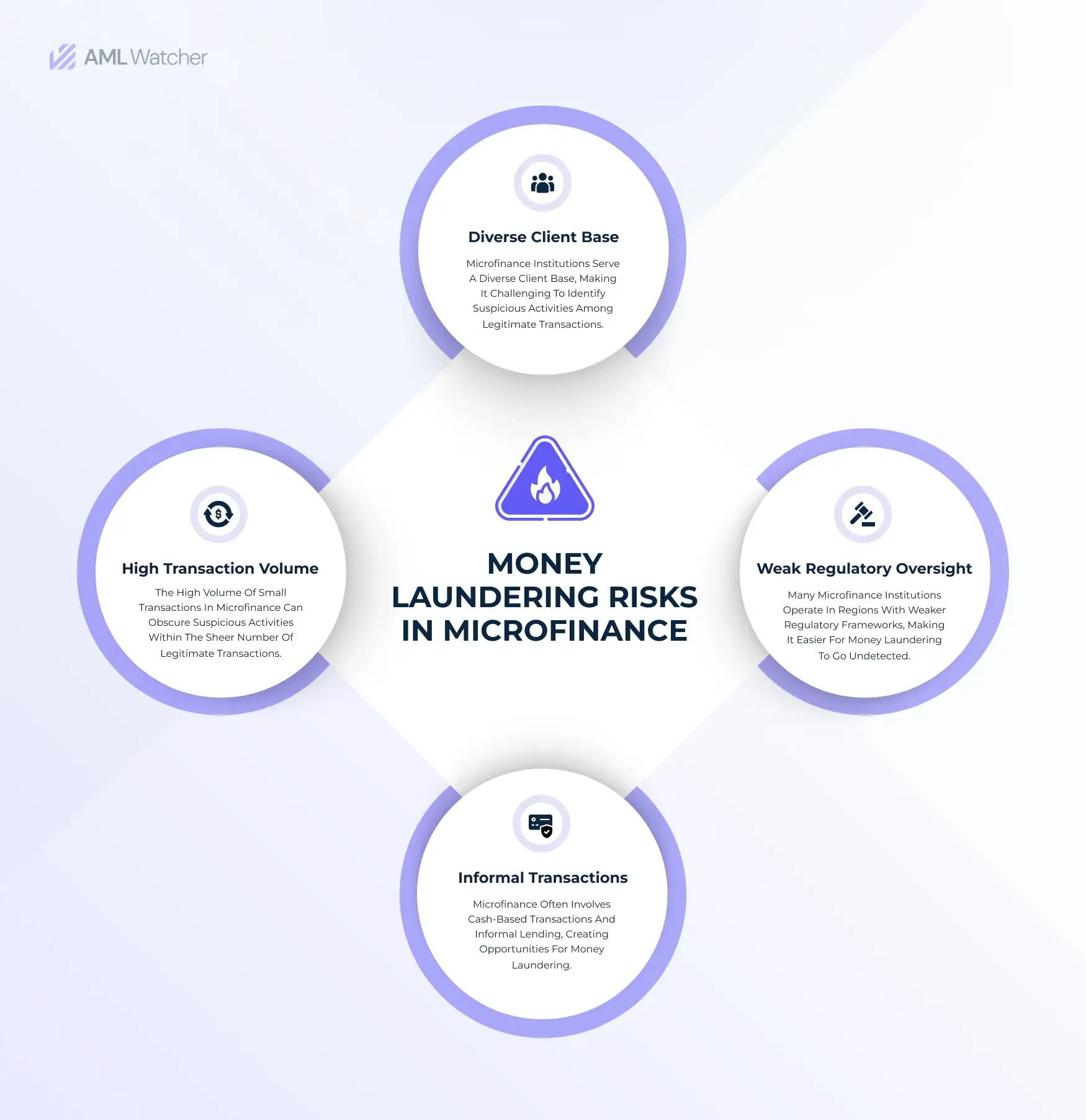
Navigating the Money Laundering Challenge in the Microfinance Realm
Microfinance institutions (MFIs) act as the new instrument driven to mitigate poverty and foster financial inclusivity all across the globe. These entities are known to provide loans, insurance, and other financial services to low-income individuals.
Having said this, the microfinance sector has grown drastically, reaching up to 3 billion customers across 168 countries. However, along with expansion, these entires are facing challenges associated with money laundering and terrorist financing, prompting the need for enhanced due diligence.
Understanding Microfinance
Microfinance at its core is a system of providing small loans to people with limited financial resources or access. It has gained attention for its ability to stabilize income, promote education, improve nutrition and healthcare, empower women, and support informal businesses. Microfinance is often also addressed as “real business” because it offers financial services which in turn people lead better lives.
The Regulatory Landscape
For a long time, microfinance institutions operated in the gray area of AML regulations because of their relatively small size compared to traditional banks. As of recent estimates, the global microfinance sector is valued at approximately $124 billion, significantly smaller than the $500 billion transferred globally through remittances. Consequently, the regulatory spotlight was not on MFIs.
In countries like Vietnam, where microfinance has been studied extensively, the average loan amount is just $200. This small-scale, community-based lending system created a low-risk environment for money laundering and terrorist financing. In fact, the absence of reported cases of laundering over a two-year study period in Vietnam reflected the low risk associated with this microfinance model.
Balancing Regulation and Financial Inclusion
Despite the growing risks associated with microfinance, there is reluctance to impose heavy regulations on the sector due to its social purpose. Too much investigation and regulation could lead to increased costs for borrowers in the form of invested time and higher interest rates, ultimately reducing financial inclusion.
However, the sector of microfinancing is taking a shift to reach more people and provide additional services. Microfinance institutions are exploring digital platforms, new products, and partnerships with various providers. In this changing landscape, over-regulation could result in “de-risking,” where customers, populations, or financial institutions in developing countries lose access to finance.
The Threat of Money Laundering
While microfinance has survived through complex challenges, concerns about money laundering and terrorist financing have grown in abundance. Initially, microfinance was off the regulatory radar due to its small scale. However, as the sector expands and attracts significant investments, the risks associated with money laundering have intensified. In some countries, non-profit microfinance institutions have transformed into profit-driven enterprises, which can make them susceptible to AML risks.
For instance, India, which is the world’s largest microfinance sector is reportedly estimated at $1.785 trillion and experienced regulatory tightening in response to predatory practices by profit-driven microfinanciers. Despite these measures, instances of fraud still occur. The State Bank of India has urged the financial system as a whole to enhance anti-money laundering efforts.
Self-Regulation as a Solution
Given the complexities and challenges of regulating the microfinance sector, self-regulation has emerged as a potential solution. Self-regulation involves industry associations and national authorities providing expertise and training to strengthen compliance within the sector. Technical certification of anti-money laundering and countering terrorist financing practices can establish norms and build compliance.
One notable example of self-regulation in microfinance is the case of Enda Tamweel, a major Tunisian microfinance institution. It voluntarily underwent an assessment and received certification for AML/CFT (Anti-Money Laundering/Countering the Financing of Terrorism) compliance. This certification allowed for a thorough assessment of the institution’s operations and risk mitigation measures. Importantly, self-regulation does not replace government supervision but complements it.
Conclusion
Microfinance institutions play a very important role in fostering financial inclusivity. However, the growth and expansion of this sector into a larger industry raised concerns of money laundering and corruption through this institution, which is why the situation necessitates a smooth balance to ensure these institutions remain accessible while keeping strong AML controls in place.
Enhanced due diligence and risk-based monitoring are essential components of any screening process to navigate the money laundering challenges in the microfinance realm.
As the microfinance sector continues to evolve and expand, finding effective ways to address money laundering and terrorist financing risks will be crucial to its sustainability and its ability to continue improving the lives of millions of people around the world. AML Watcher, recognizes the critical importance of this approach and thus offers a comprehensive name-screening service. Moreover, AML Watcher serves as an invaluable resource for those seeking to unravel the intricacies of MML. After developing a significant understanding of AML compliance, expert insights of AML Watcher are crucial in the fight against financial wrongdoing.
Feel free to contact us, our team will be excited to help you with compliance.
We are here to consult you
Switch to AML Watcher today and reduce your current AML cost by 50% - no questions asked.
- Find right product and pricing for your business
- Get your current solution provider audit & minimise your changeover risk
- Gain expert insights with quick response time to your queries




